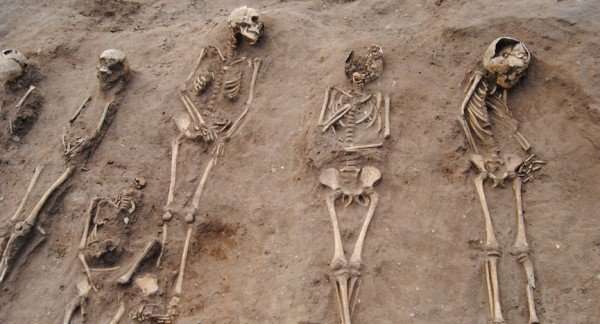The “Human Monsters” from Conrad von Magenberg’s “Buch der Natur”, Augsburg, 1475. In the bottom row, the third woman from the left has an elongated sack hanging from the mandible region.
In the fourteenth century, astronomy was by far the most advanced branch of systematised scientific knowledge. For students of the stars, totally at a loss to explain what was happening around them, it was only natural to extrapolate desperately from what they understood and seek to compose from the movement of the planets some code of rules which would interpret and give warnings of events on earth.
"The medieval cosmic outlook," wrote Dr. C. Singer, "cannot be understood unless it is realized, that analogy pushed to extreme lengths, unchecked by observation and experiment, was the major intellectual weapon of the age'.
Astrology, that arcane compound of astronomical research and semi-magical crystal-gazing, was near the peak of its prestige in the fourteenth century. It was the Arab astronomers who had evolved the theory that the movements of the planets and their relationship to each other in space dictated the future of humanity. Since the Black Death was clearly far out of the normal, some abnormal behaviour on the part of the planets had to be found to explain it.
Various theories were propounded from time to time but the classic exposition was that laid down by the Medical Faculty of the University of Paris in the report prepared on the orders of King Philip IV in 1348.
On 20 March, 1345, at 1pm, there occurred a conjunction of Saturn, Jupiter and Mars in the house of Aquarius. The conjunction of Saturn and Jupiter notoriously caused death and disaster while the conjunction of Mars and Jupiter spread pestilence in the air (Jupiter, being warm and humid, was calculated to draw up evil vapours from the earth and water which Mars, hot and dry, then kindled into infective fire). Obviously the conjunction of all three planets could only mean an epidemic of cataclysmic scale.
Gentile da Foligno referred to the planets in general terms and then went on...."It must be believed that, whatever may be the case with regard to the aforesaid causes, the immediate and particular cause is a certain poisonous material which is generated about the heart and lungs". The job of the doctor, he concluded, was not to worry about the heavens but to concentrate on the symptoms of the sick and to do what he could to cure them.
Such admirable common sense was the exception. The European, in the face of the Black Death, was in general overwhelmed by a sense of inevitable doom. If the plague was decreed by God and the inexorable movement of the planets, then how could frail man seek to oppose it? The preacher might counsel hope, but only with the proviso that the sins of man must first be washed away by the immensity of his suffering. The doctor might prescribe remedies, but with the tepid enthusiasm of a civil-defence expert advising those threatened by imminent nuclear attack to adopt a crouching posture and clasp their hands behind their necks.
Jehoshaphat Aspin, designed whimsical astronomy cards in the early 19th century.
The Black Death descended on a people who were drilled by their theological and their scientific training into a reaction of apathy and fatalistic resignation. Nothing could have provided more promising material on which a plague might feed.
Work cited Ziegler, Philip The Black Death, 1969
Photograph by Ian Goldby



No comments:
Post a Comment